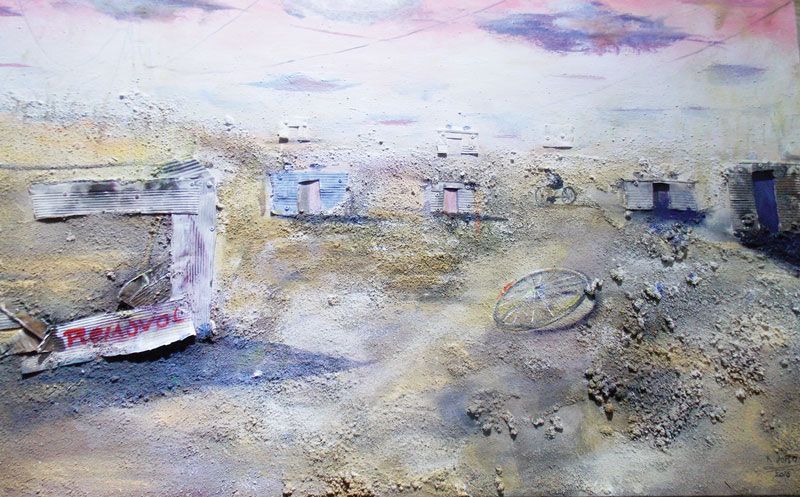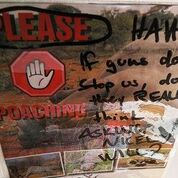
Urban Identity – The rustic lifestyle on canvas

John Kalunda’s first solo exhibition titled Urban Identity was launched earlier this week at the Village Opera House. The exhibition offers a unique and tangible construct of artworks that represent different views of the informal settlements that stand starkly on the outskirts of the Windhoek. The exhibition delves into how these settlements are perceived, and what they express as a language of the city.
It runs until 07 October 2016.
When one thinks of the informal settlements that surround the city, dust clouds hanging in the beam of a light from the late afternoon sun, comes to mind. Taxis crowding the streets like a swarm of flies, and perhaps the odd street kid asking for a dollar at the women who sell fruits, are also typical scenes. Kalunda’s exhibition not only captures the essence of the people that inhabit these neighbourhoods, it also confronts the viewer with the brutality of living in a shack. The artists explains that his work involves engaging with the community and the physical space to establish the type of material that would represent the ambiance of the community.
Kalunda uses natural objects in the surroundings of the community which are used to create a feel for the place and the people. Natural materials such as grass, sand, stone and sticks in combination with discarded plastic, tin and carton containers shape and inform the work. In some instances rusted and shiny tin symbolizes the lack of means to put up a simple shack whilst the rough textures embody the harsh, untarred and exposed environment.
A first impression is that Kalunda over-compensates with regard to this intolerant and exposed environment. All his mixed media paintings have a glaring similarity about them, all of them are made of the same material from lifelike miniature tin houses to old cars that look like you need to push them to start them, to small details like contaminated streams of water running between the rusted shacks. Kalunda who graduated from the College of the Arts in 2013 was born in Kaguni in the Kavango in 1986. The artist is a part time art teacher at the Amazing Kids Private School and a Visual Arts student at the University of Namibia.
He told the Economist that the materials he uses portray the socio-economic circumstances of the shack dwellers. One of his canvases titled the Rainbow, is a good example of this as sometimes unsanitary living conditions and the disposing of water often create lush but deceptive environments. “And sometimes one can even see a rainbow” he said.
“How we perceive ourselves individually and collectively in the neighbourhoods and cities in which we live has an impact on the decisions we make and how we will interact with others and subsequently how our cities function based on our collective lifestyles” Kalunda said explaining that the huge inequality gap informs his art as well.
The body of work indirectly offers a subtle critique of the living conditions of many Namibians. Is it no irony that the title talks of urban identity whilst the images are rural in essence, in the sprawling locations of Windhoek.










































